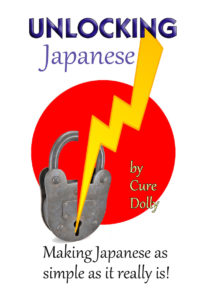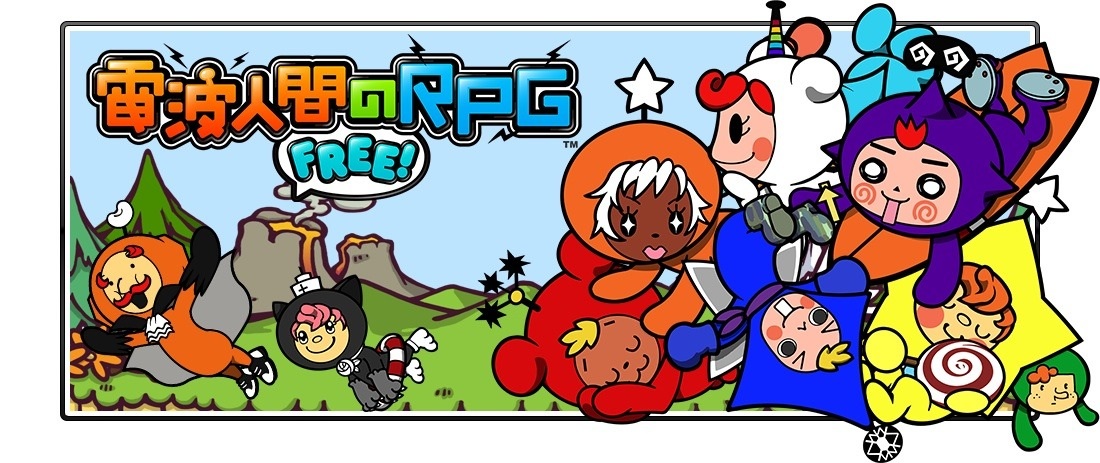 Can you learn Japanese through playing games? Well, the right games can certainly help a great deal. And this week saw the launch of one of the best games for the purpose. And even better – it’s free!
Can you learn Japanese through playing games? Well, the right games can certainly help a great deal. And this week saw the launch of one of the best games for the purpose. And even better – it’s free!
The game is called めがみ めぐり Megami Meguri, which could perhaps be translated as Goddess Tour (though I don’t think any translation really captures the spirit of the title).
From the language-learning perspective, the most interesting things are that it is almost fully-voiced and it involves teaching human language (i.e. Japanese) from the ground up to a new-born Goddess who knows almost nothing.
The game uses artificial intelligence and the “Megami Speak Engine”, an artificial voice synthesis system developed by Capcom and Toshiba, using Toshiba’s voice synthesis engine, ToSpeak G3, as its base. The Megami Speak Engine is used in Megami Meguri by having the character make use of user-input words to converse in a near natural-sounding synthetic voice.
In fact, talking is a major part of the game. As the senior Goddess, Amaterasu Omikami, advises at one point:
話して、話して、話しまくることじゃ
Hanashite, hanashite, hanashimakuru koto ja (=da)
The makuru auxiliary verb has been explained as “to do with reckless abandon”. The meaning here could be rendered as “talk, talk, talk ’till you drop”. Because by talking, learning new words and learning all about you, your heroine grows and develops.
This means that you are spending a lot of the game interacting in Japanese and developing the character of your fledgling goddess. Her appearance and voice are your constant companions. And fortunately, since her language-learning process is not really naturalistic (this is entertainment after all) you can’t actually teach her wrong Japanese. She will develop correctly in the language. And in fact, despite not knowing the names of many simple things, she is really quite competent in Japanese from the start.
The game has essentially two overall aims, both concerned with developing the heroine as a person (or rather goddess). One is to develop the relationship between yourself and your heroine through conversations with her, the information you give her and the things you tell her about yourself. The other, as expressed by Amaterasu, is
人間に関する知識は重要だ
Ningen ni kansuru chishiki wa juuyou da
Human-related general knowledge/common sense is of great importance.
This is interesting for those who want to learn about Japanese culture as well as language. “Human-related knowledge” means in fact “Japan-related knowledge”, just as “human language” is Japanese.
You are in fact raising an intelligent and functional person who is nonetheless like a small child in relation to things Japanese – rather like you at the start of your Japanese self-immersion.
You will be traveling all over Japan. In fact, you can visit every one of the 9000+ railway stations in Japan!
Nearly everyone in Japan is a little bit of a 鉄 tetsu (railway enthusiast), and more than other countries, the railway system does still feel like the main arteries of the country. If you have spent time in Japan, just hearing the names of railway stations makes you feel natsukashii (nostalgic).
Traveling to different places you also learn about their special foods. Again, the Japanese are very interested in the 名物 meibutsu or special product of each area – usually food. You can barely mention Kobe to anyone without the subject of beef coming up, for example.
You will be learning about a lot of other things too. Things Japanese people mostly know already, but love to celebrate, presented in a way accessible to people who don’t know these things, because that is what the heroine of the game is.
And you will be learning about Japan, not only in Japanese but through Japanese eyes – learning the things that are salient to the Japanese soul, rather than the perspective of the foreign tourist (or even the foreign “otaku”).
I very much doubt if this game will ever come to the west. It is far too Japan-centric. And if it ever did, far more even than most things, it would be localized out of existence.
Pros and cons of Megami Meguri
I am not going to list pros and cons separately, as one person’s pro may be another person’s con and vice versa. But here are my thoughts.
The voice used by the heroine of Megami Meguri isn’t perfect. Actually it does sound pretty natural in intonation, and the limitations in sound production just make her seem a little nasal/muffly, which actually suits her naïve personality. Everything she says also appears as text onscreen, so understanding is not a problem. In fact she is quite understandable anyway.
There are no furigana in this game, so if you need them that could be a problem. Just about everything the heroine says is voiced, but the explanatory commentaries of Amaterasu are not. There is some good voice-acting for other characters, but not always, so if kanji are a sticking-point the game might not be ideal for you. On the other hand, there is a lot of voiced text.
3D seems to be unused. I don’t know if it will be employed for some effects, but so far I haven’t seen any. Some people don’t seem to like 3D and even turn it off, but I love it, so I found this a small disappointment.
Building a relationship with a virtual character is really the central point of this game. To me this is very important. I actually downloaded a demo of Konami’s LovePlus some time ago. I really liked the idea, though as a doll I wasn’t too interested in playing a boy or having a “waifu“.
This game seems to be doing what LovePlus does, only for a broader audience and with the huge enhancement of having your virtual partner actually talk to you.
The game is free-to-play. The business model relies on in-game purchases, but I don’t think you are ever forced to make any in order to continue. Of course, as you get more involved you may end up tempted into doing so!
It is easy to download if you have a Japanese 3DS. If you haven’t, I can only say that getting one is one of the best immersion investments you can make. People complain that 3DS is region-locked, and while I understand the complaint, from a self-immersion point of view, being locked into Japan is no bad thing, and fortunately it doesn’t lock you by the region you are in but by the region your 3DS comes from.
Obviously Megami Meguri isn’t a game for the absolute beginner, but as a supplementary immersion strategy it has some really important advantages.







 2018 UPDATE: Rikaichamp does not have the search box, but you can get this window by pressing return while the regular pop-up window is active.
2018 UPDATE: Rikaichamp does not have the search box, but you can get this window by pressing return while the regular pop-up window is active.